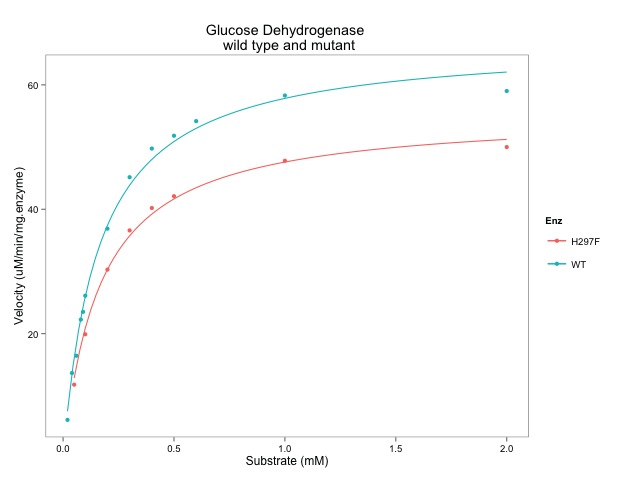Joaquin is taking the lead on working with FIJI and I am developing the R material. For biological image analysis there is a useful package called EBImage. This has a nice introduction available and a detailed handbook - (version: 4.13.5).
I have been using this package to count cell nuclei in an image. The image is a microscope picture of a Drosophila gut. Counting nuclei involves mathematical transformations of the digital data. A digital image is a matrix of numbers.
In non-technical language the key steps are:
- blur the image
- apply a threshold to turn nuclei into 'blobs'
- count the 'blobs'
The output from this script is:
Number of nuclei in this image = 92
The script below downloads an image from Github, opens the image, displays it, transforms it and then counts the nuclei. Because I plan to count nuclei from more than one image, I have made a function and then applied it to the downloaded file. Using user defined functions to automate your workflow is a very good use of R.
Number of nuclei in this image = 92
The script below downloads an image from Github, opens the image, displays it, transforms it and then counts the nuclei. Because I plan to count nuclei from more than one image, I have made a function and then applied it to the downloaded file. Using user defined functions to automate your workflow is a very good use of R.
SCRIPT:
# to install use this:
# source("http://bioconductor.org/biocLite.R")
# biocLite("EBImage")
library(EBImage) # you might need to install - see above
# the image is on Github
# it is from a set of cells that are stained to detect the nuclei
# it is from a set of cells that are stained to detect the nuclei
# this is the link to the data
link <- "https://raw.githubusercontent.com/brennanpincardiff/RforBiochemists/master/data/seq/seq_z015_c003.tif"
# the download.file() function downloads and saves the file
download.file(url=link, destfile="file.tif", mode="wb")
# EBImage uses the readImage() function to load the file.
img1 <- readImage("file.tif")
display(img1, method = "raster") # shows the image within R.
display(img1*4, method = "raster") # multiply the image to make brighter
# I have written a function to count nuclei
# includes blurring the image, applying a threshold and counting....
# it displays the image as it is changed.
# it's not perfect and overestimates the number of nuclei.
# it's an example that can be done.
# improving and customizing the various options is very feasible.
countNuclei <- function(img1){
# blur the image
w = makeBrush(size = 11, shape = 'gaussian', sigma = 5) # makes the blurring brush
img_flo = filter2(img1*2, w) # apply the blurring filter
display(img_flo * 4, method = "raster") # display the blurred image - brighter for display only.
# apply a threshold
nmaskt = thresh(img_flo *2, w=10, h=10, offset=0.05)
display(nmaskt, method = "raster")
nucNo <- max(bwlabel(nmaskt))
# this outputs the count to us
# this outputs the count to us
cat('Number of nuclei in this image =', max(bwlabel(nmaskt)),'\n')
return(nucNo)
}
# this applies the function to the image
nucNo <- countNuclei(img1)
END OF SCRIPT







